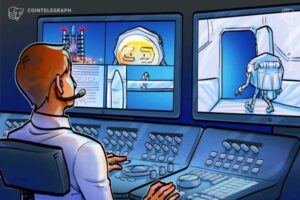NFT marketplace LooksRare launches V2, reducing fees from 2% to 0.5%

Nonfungible token (NFT) marketplace LooksRare has upgraded to version 2, reducing fees by 75% and implementing several other features, according to an April 6 announcement from the company.
The LooksRare version 1 platform charged 2% per trade. This has been reduced to 0.5% in version 2. In addition, V2 has more gas-efficient contracts, allowing users to save approximately 30% on gas fees versus the previous version of the app.
The company explained that, in version 2, sellers would receive Ether (ETH) instead of Wrapped Ether (WETH) for most sales, and the smart contracts would allow for bulk buying and selling orders if a user wants to place multiple trades simultaneously. In addition, aggregators can now implement custom recipients, allowing users to buy an NFT with one wallet but send it to another.
Sellers can also list their NFTs for sale in token prices instead of ETH, including for a fixed U.S. dollar price to be paid in equivalent ETH.
The team said in a separate April 7 post that LooksRare V1 will be sunsetted. On April 12, the app’s front-end will no longer allow users to post version 1 auctions through the republic API. On April 13, all current V1 auctions will be removed from the website at 10 a.m. UTC, and the smart contracts themselves will be disabled through an admin function at 11 a.m. UTC.
Related: NFT aggregator Blur eyes 30% price pump by March amid airdrop euphoria
Reaction to the announcement was mostly positive, as many LooksRare users believed the new features would provide a strong challenge to competitors such as Opensea and Blur.
But not everyone was convinced that LooksRare V2 would be enough of a change to woo users from other platforms. Some users expressed that V2 still fails to provide good token incentives or allow enough collections to be listed.
LooksRare faced some controversy in October when it decided to eliminate creator royalties. However, it has also benefited from the recent boom in NFT token prices.
Source: Read Full Article
